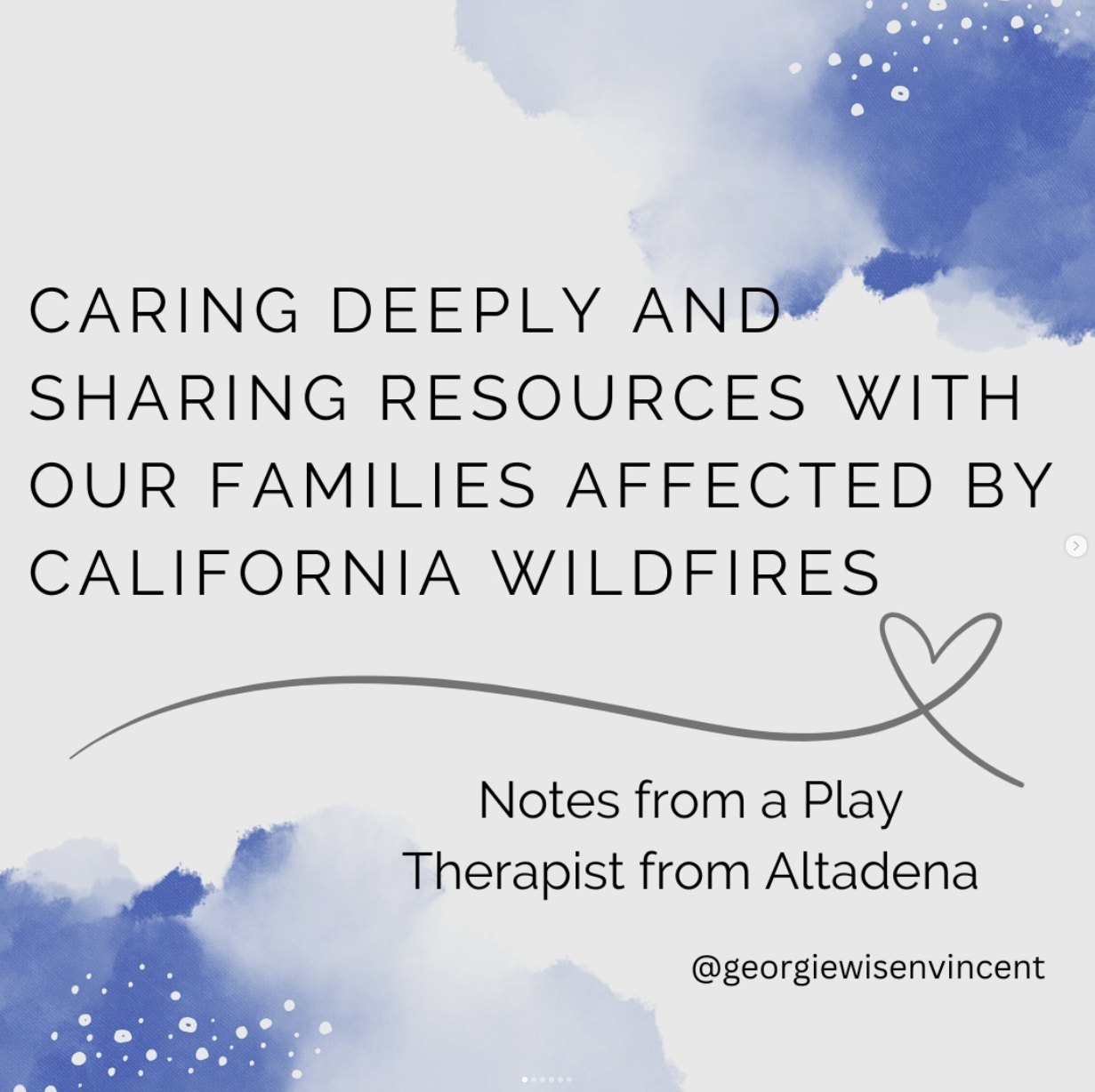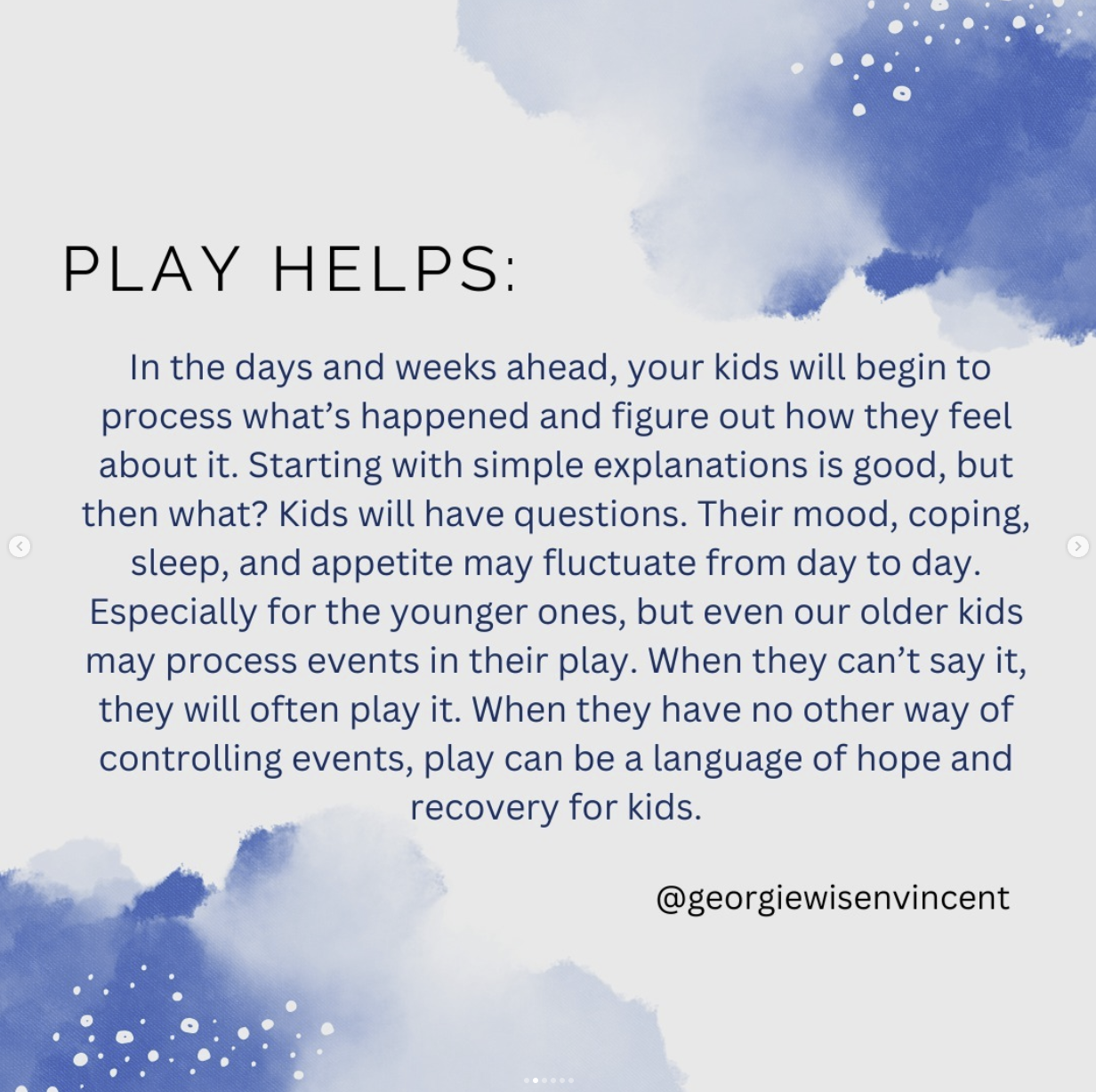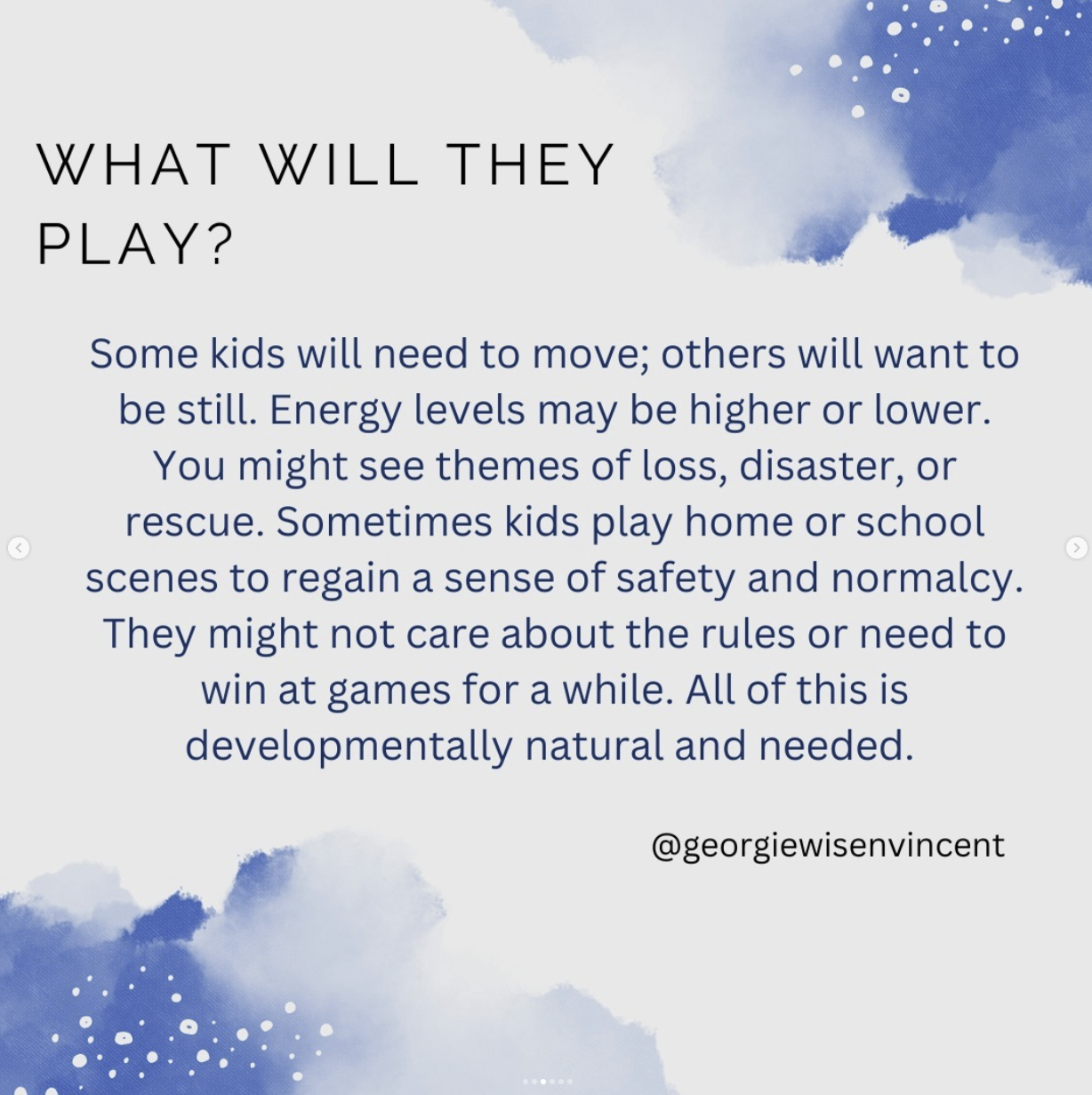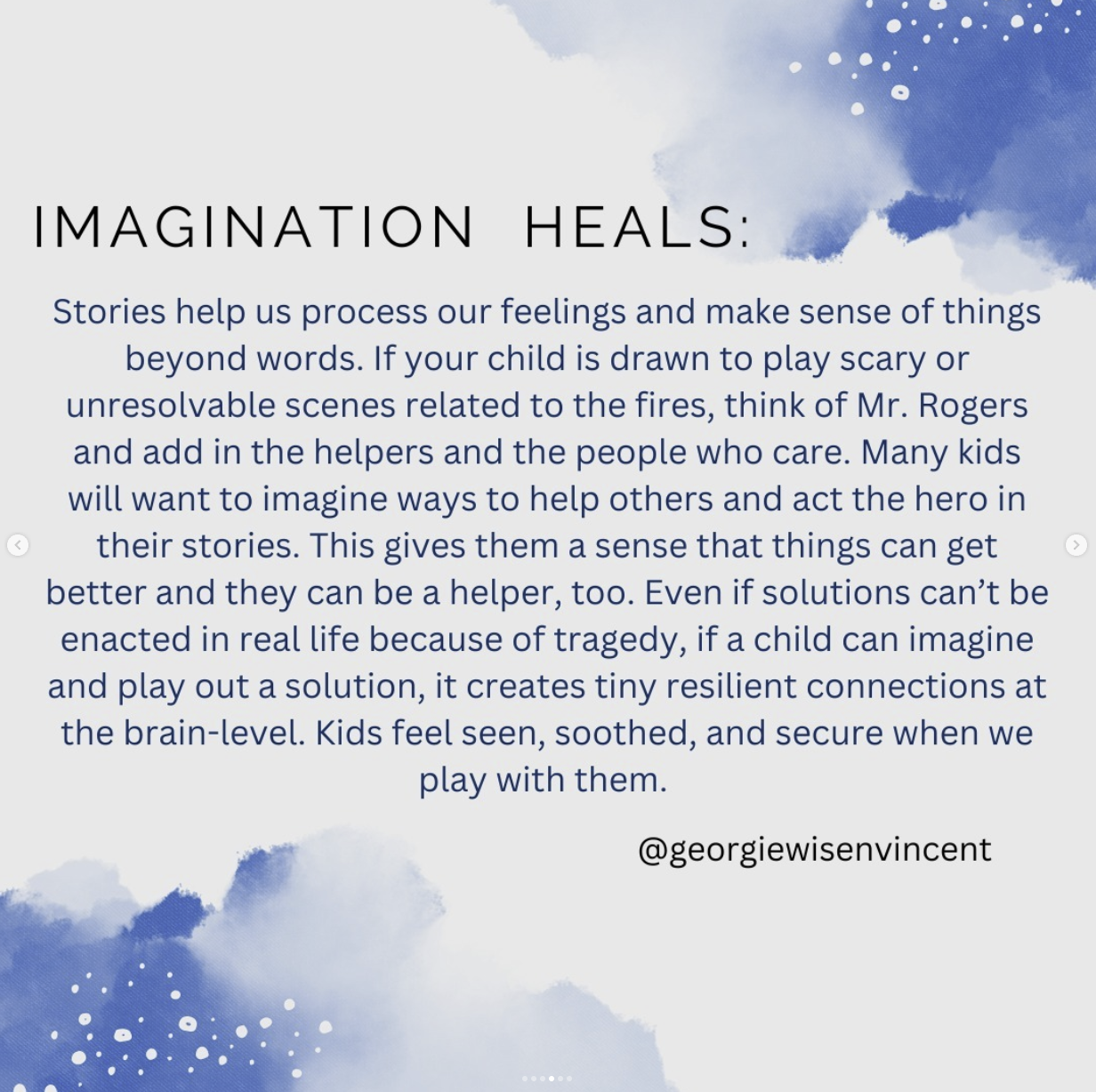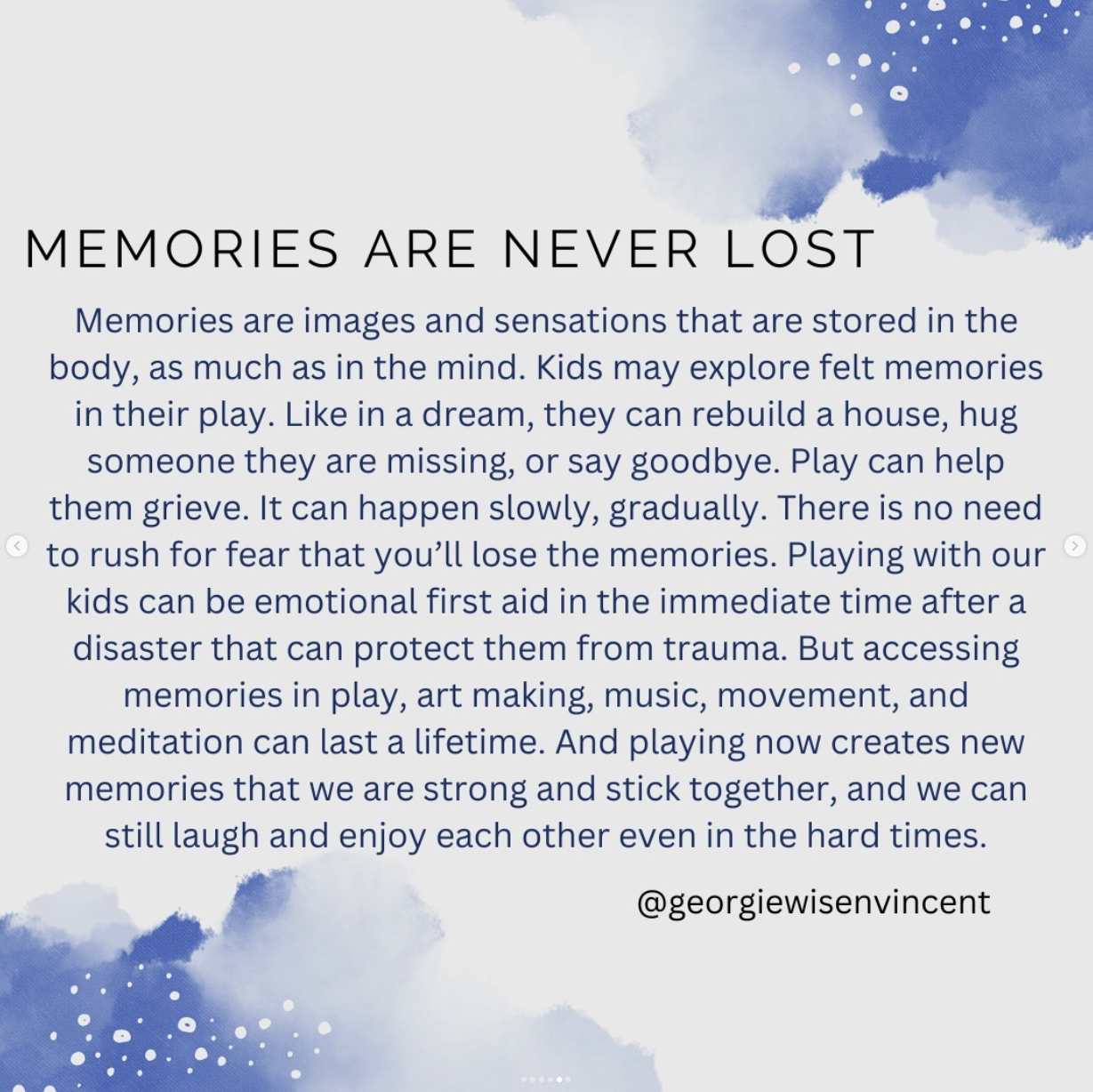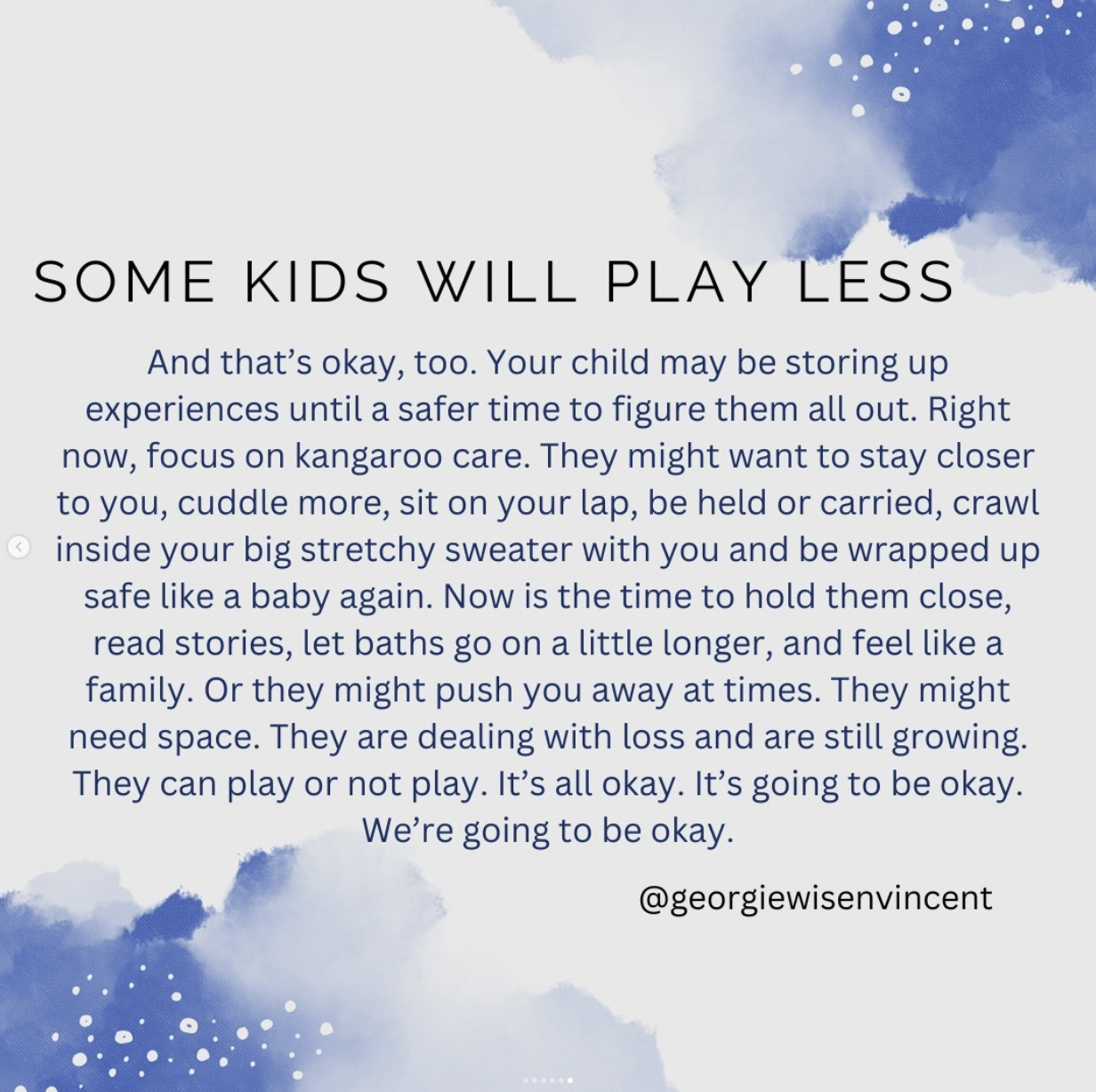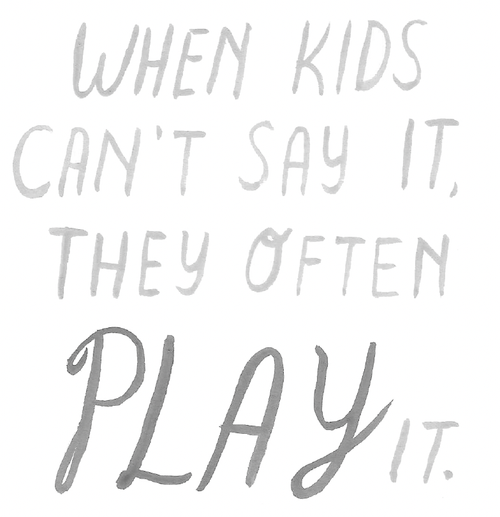To our community, our hearts and thoughts are with you during this time. Many of us have been impacted by the recent fires and we hope that you and your loved ones are staying safe. Below are some tips and scripting to help you navigate this situation as a caregiver.
1. Let them tell their story: Allowing kids to tell their narrative helps them process the events, and “Name it to Tame it” (scroll down to the next section for a script that achieves this). By doing this, it will give you insight into their understanding and how to help them. Children may communicate their story in a variety of ways, and they may want to tell or act out the story over and over again, and that is ok.
2. Talk about all the ways things “worked”: While our city and surrounding areas are devastated by this disaster, helping kids identify the things that “worked” to keep them safe is key. Here’s a few talking points you can reiterate for them:
Our brains worked to alert us to danger and helped us get to safety. (You can even invite them to regard their own mind, “Brain, thank you for trying to keep me safe. Of course it makes sense for you to feel that way but let’s take a new look today.” And then, look with fresh eyes and say “okay worries, you can be quiet for a while now. I’m safe now and I am surrounded by loved ones who will take care of me if I have a need.”)
Our emergency services worked and are working to keep people safe.
The community is working to make sure people have places to go and food to eat.
3. Adult worries vs kid worries: We want to take extra care to not have our kids worry about all of the things you are working to restore.
First, spare kids from adult conversations as best as you can (btw, they are always listening).
Second, remind them that there are certain things that the adults need to think about, and they only need to worry about which gummy bear color is better, red or green. If you can get specific about what your child is really worried about, it can be much more effective to address that specific concern instead of just generalized worry. You can ask “What is the thing you are worried about the most?” And then listen, tune in, let the feelings be heard, and then you can say “let’s be problem-solvers about that. I have some ideas, but let’s start with you. Do you have any ideas that might be helpful?”
Click here to hear our Founder, Dr. Tina Payne Bryson, talk about the difference between anxiety as pathology and anxiety as a healthy response to a situation that’s anxiety-producing.
Click here to learn about resources available to you, including virtual support events (hosted by therapists in our community, with options currently scheduled for January 10, 11, 13, and 15).
4. What is the next step?: This disaster is unimaginable and it is hard to even fathom the magnitude of rebuilding that needs to take place personally and physically. When things seem insurmountable, we can ask ourselves, “what is the next indicated step?” While we can keep a quiet eye on the horizon, our nervous system just needs to know what to do next. One foot in front of the other.
5. Check in and check out: check in with yourself and take time to grieve, cry, and fall apart. This is hard and you don’t have to be ok all of the time. Connect with and share your feelings with others that can hold space for you and take time to regulate your nervous system. And, it’s OK to take some time to take breaks from feeling as well. You or your kids might benefit from listening to an audio book or watching a show that you know well and that is familiar.
6. Behaviors are coming: Your kids might exhibit a variety of behaviors in the coming weeks that may or may not take you by surprise. When certainty, predictability, schedules, and the sense of safety are in flux or jeopardy, the nervous system will respond in a variety of ways. Stay curious and co-regulate. When we say co-regulate, we mean that you monitor and help modify your child’s emotion with cues of safety, comfort, and soothing.
7. Prioritize cues of safety: Comfort foods and cozy blankets and comfortable clothing, as well as taking deep breaths, laughing at funny videos, playing, and cuddling or rocking can make a huge difference in helping the nervous system feel safe. Keeping things as predictable as possible, and keep as many routines and rhythms as possible.
Messaging for Kids
Here is a social story prepared by our OT, Kira Bender, MS OTR/L. This is a great use of the “Name it to Tame it” strategy (from The Whole-Brain Child) and can be used by teachers, professionals, or caregivers wanting to help children understand what's happening right now while also providing lots of cues of safety.
Messaging for Young Kids (with options for loss of school, loss of home)
For young kids, consider using this alternative script, developed by our pediatric psychologist, Dr. Cathy Schaefer.
Play Can Help
Scroll through the images below and learn from our incredibly experienced play therapist, Georgie Wisen-Vincent. She shared these resources which talk about how play can be healing for the whole family. (When you're ready of course. ❤️)
Communication Board
This downloadable communication board was created to be used with any communication partners and may be especially beneficial for non-speaking or minimally speaking individuals when sharing about the recent wildfires.
How to use it?: Use this communication board to model language and/or mirror either or both partners' verbal language while communicating with your non-speaking or minimally speaking communication partner. When modeling, remember to do so without expectation of imitation or a response. You can use this communication board to model vocabulary while using the strategy “Name it to Tame it”, and talking about all the ways things “worked” during the fires to keep people, pets, and communities as safe and secure as possible. Have this communication board available for you and your communication partner to use throughout the coming weeks, and continue to model while talking about the fires.
Additional Support
Our clinical psychologist, Dr. William Lacey, also contributed to this article from the LAist. He has experience running support teams for kids and families after Hurricane Harvey in Houston and was interviewed along with Rebecca Hedrick, a child and adolescent psychiatrist at Cedars-Sinai Medical Center, to address three specific needs. Click on the link above to read the article or expand the topics below to read their suggestions.
-
Validate children’s feelings: Hedrick said adults should acknowledge feelings of sadness and anxiety. After you've validated their feelings, she said, you can remind them that you are there to help keep them safe and there are plans in place.
Involve children in packing a go-bag: Even if you are not under evacuation orders, Hedrick recommended packing a go bag with a child to help them feel like they have agency. Ask kids if they would like to pack a favorite toy or book.
Limit exposure to media and social media: Images of the fires can be scary for young children and even teenagers, Hedrick said.
Maintain a routine: With school closures and recommendations to stay indoors, Hedrick said, it can be hard to maintain a routine, but doing so can help children feel like they have some agency. She recommended involving children in chores like preparing meals.
Give them a chance to express themselves: For children in that 4- to 7-year-old age group, Hedrick said, this could look like playing and enacting scenarios through play. For example, having a stuffed toy expresses how they’re feeling about the fires. ”Give them an opportunity to help, to think of problem-solving solutions themselves,” Hedrick said. “This will help to decrease their sense of helplessness.”
Have young kids enact fire drills at home: Ask them questions about what they would do if they had to leave and where they could go so they have a sense of what plans are. Also enact a fire or evacuation as if children were in school or not at home so they know about plans in those instances.
With older children, discuss the causes of the fires, fire safety precautions and how to respond in emergency situations.
Strengthen a child’s friendships or peer support: Zoom play dates or show-and-tell virtually can help a child still maintain friendships and feel connected during a tragedy, Hedrick said.
-
Dr. William Lacey-Bisetty, clinic director at the Center for Connection — Santa Barbara, said adults can try to refocus what home is.
“ Home is this connection, this family, this community we have, and those things are going to maintain even with the loss of the material aspects of home, the physical space,” he said.
Some things you can do:
Don’t diminish the little things: Kids can focus on the little things they have lost like their toys and books or a favorite game. Allow them space to grieve and redirect when you have found some settling. “ Those are the things that really make kids feel connected and grounded in some spaces, and there's nothing wrong with that,” Lacey-Bisetty said.
Model coping methods for children: Hedrick said some people lean on religion and spirituality in moments like this and praying together is something you can do with children.
Creating avenues for expression: Start new routines where children can share answers to questions like five things they miss. Hedrick said adults should start these lists on the negative side and then progress to questions like five things they are thankful for. “ You want to give a voice to the fears, the anger, the sadness, so that there's a little bit more space in their mind and their heart to be able to open up to the more positive aspects of gratitude and hope,” she said.
-
Adults will be anxious if they have had to evacuate or lost a home and it's important to accept it, Hedrick said.
“ It's important that the adult has some place somewhere to express their feelings first,” she said. “It's also important to use a healthy coping skill that we call suppression. It's different than repression. Repression is, ‘I don't have these feelings.’ Suppression is, ‘I am terrified. I am angry. I am in the most intense grief I can imagine, but I don't have time for those emotions right now.’”
Also forgive yourself, Hedrick said, if you find yourself projecting on a child. Apologize to them to model that it’s OK to be angry, frustrated or sad.
Find opportunities for play and joy, she said, like building a fort together, playing board games or tag.
“ These types of things are a lot more helpful in healing to the psyche and to preventing possible development of post traumatic stress or other types of anxiety disorders that will persist after the fires,” she said.
Caregivers and teachers can find additional support from the National Association of School Psychologists here.
And, all caregivers can visit the National Child Traumatic Stress Network website for strategies to help kids cope. There's a helpful flyer here or you can download their app which "helps parents talk to their kids about the disasters they may face and know how best to support them throughout—whether sheltering-in-place at home, evacuating to a designated shelter, or helping your family heal after reuniting. This mobile app is also a great resource for teachers and other professionals involved in children's lives." Learn more and download the app here.


